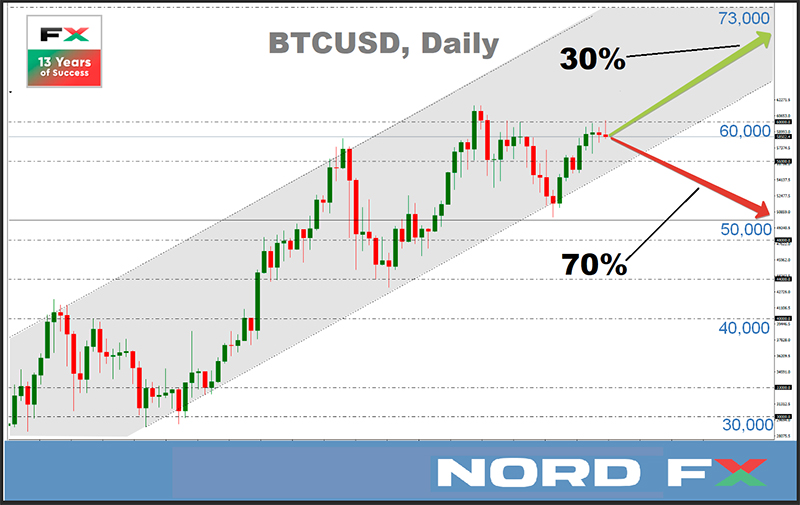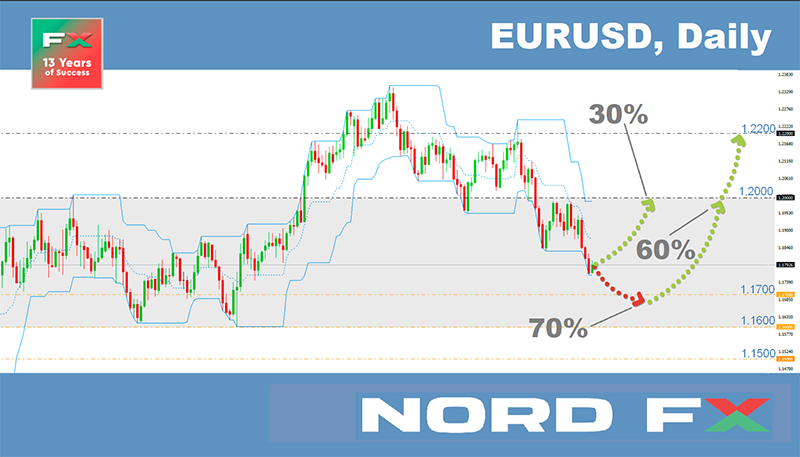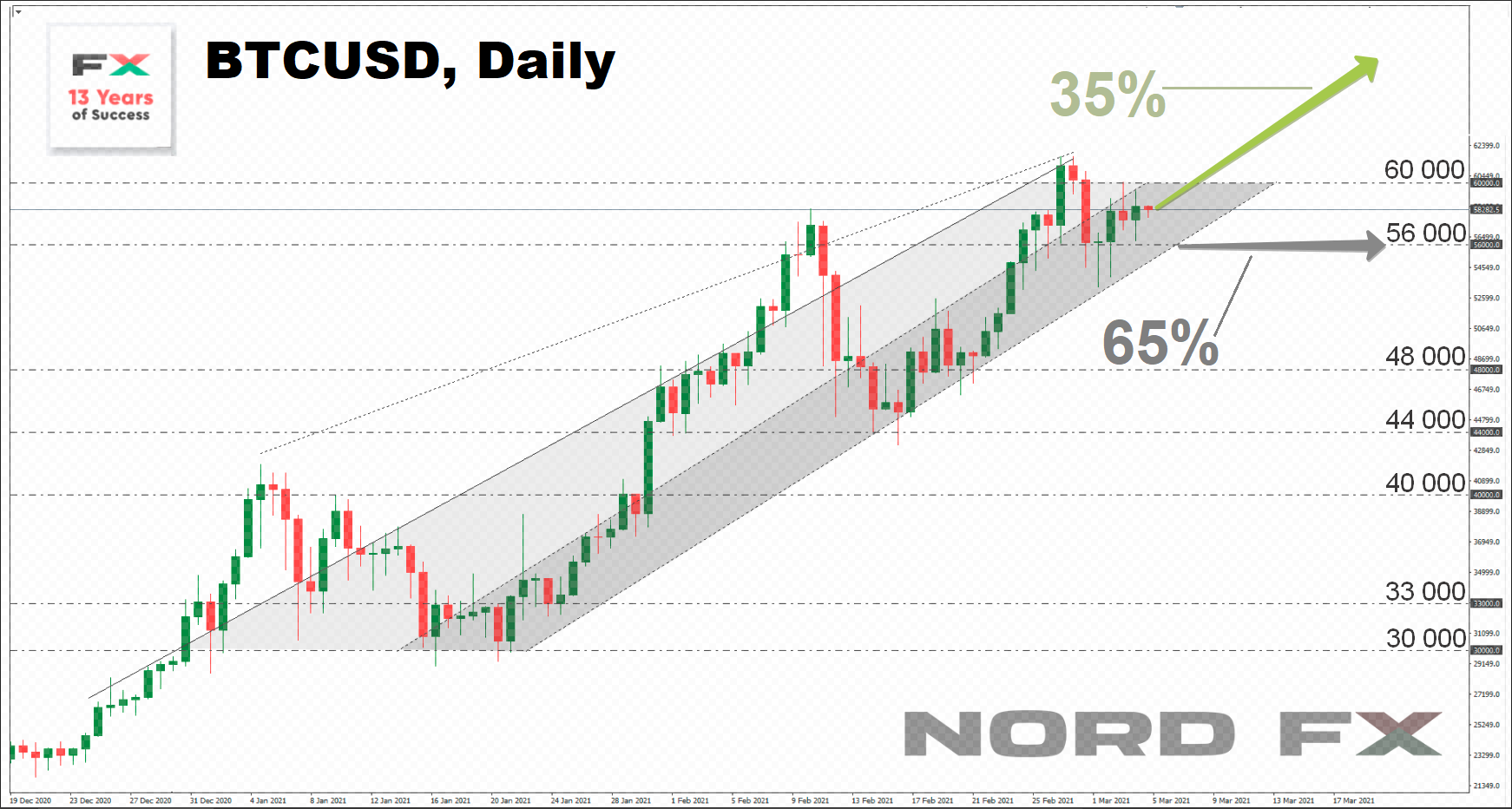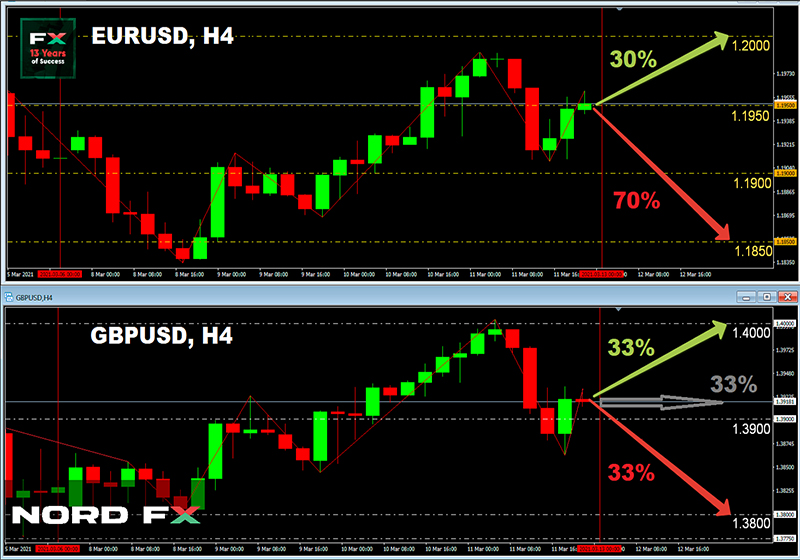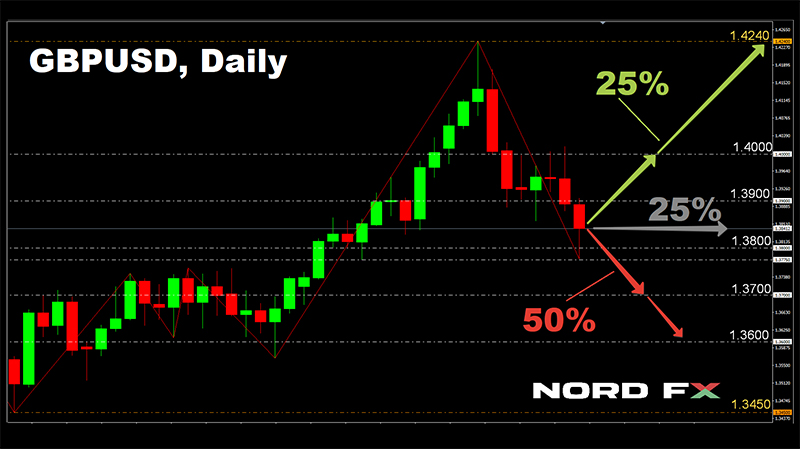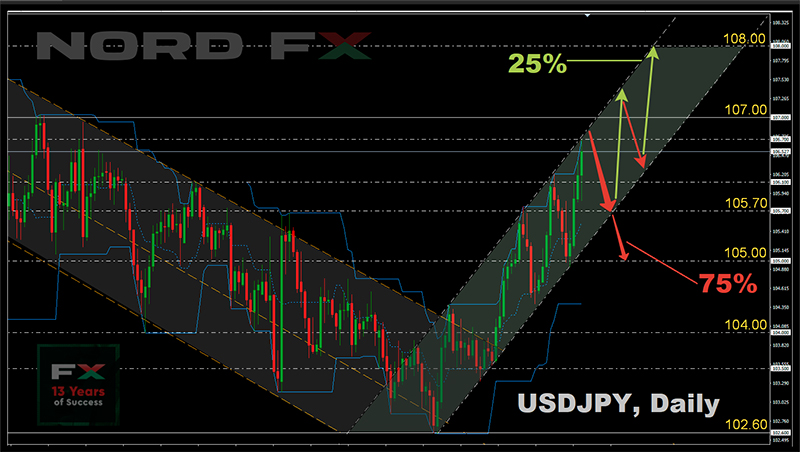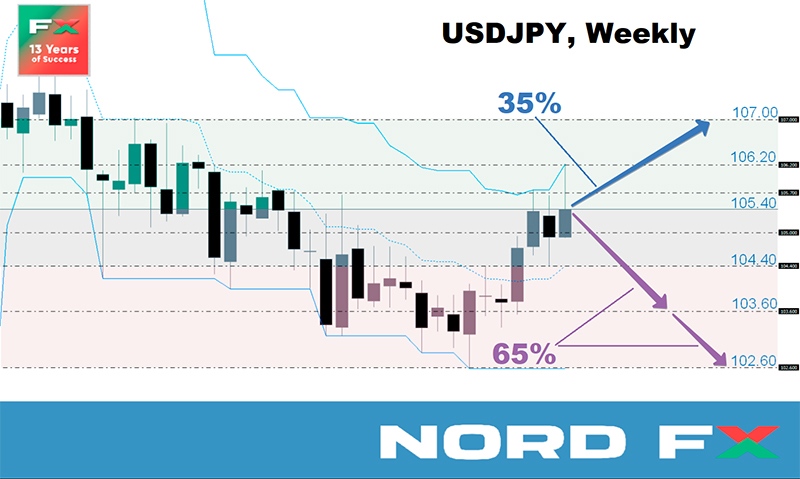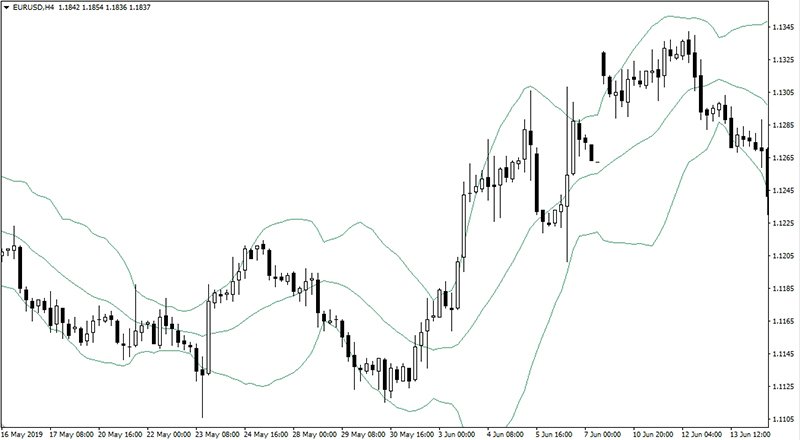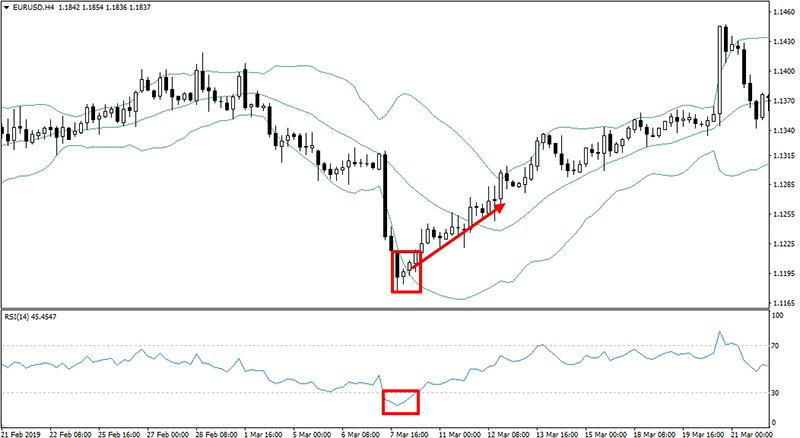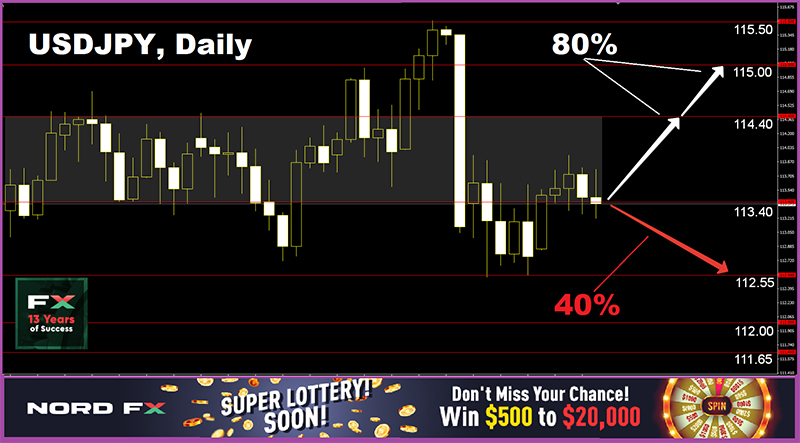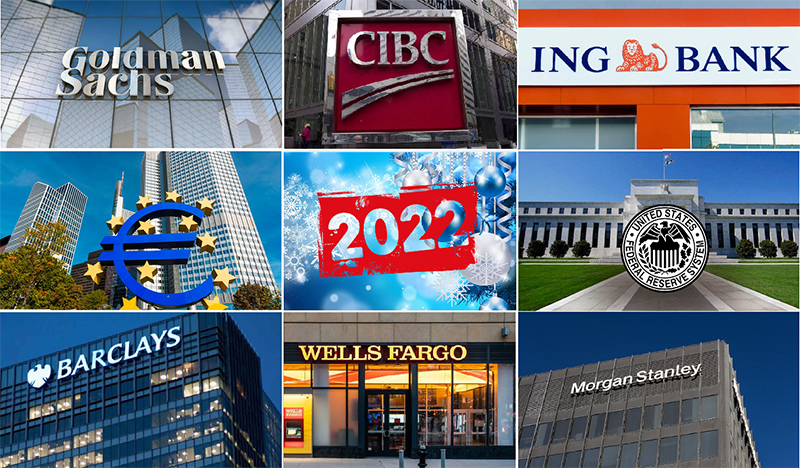Forex and Cryptocurrency Forecast for December 13 - 17, 2021
EUR/USD: Ahead of the Fed and ECB Meetings
We titled this section of the review “Employment and Inflation Decide Everything” last week. It is these two parameters that determine the monetary policy of central banks in the current situation. The next meeting of the US Federal Reserve will take place on Thursday, December 16, and the markets expect the regulator to speed up the procedure for curtailing incentives, and, perhaps, even increase the interest rate. Undoubtedly, these decisions will be influenced by the macro statistics released in recent days.
The report from the US labor market published on December 09, looks pretty good overall. The number of initial applications for unemployment benefits was expected to grow by 3,000, but it fell by 43,000 to 185,000 instead. This is the minimum in more than half a century, since 1969. On the other hand, the situation with repeated applications turned out to be worse than forecasted: their number increased by 38 thousand instead of falling by 72 thousand. But if we sum up both indicators, we get a reduction in applications by 5,000, which confirms the trend towards the recovery of the labor market. Moreover, the number of open vacancies has grown by 431 thousand: there is already a shortage of labor in the United States.
As for inflation, the higher it is, the greater the chances that the Fed will begin to tighten its monetary policy even faster. And we are talking not only about reducing the repurchase of assets, but also about raising the key rate, which can lead to a further strengthening of the dollar.
Inflation in the United States has currently reached record levels in more than forty years and, judging by the data released on December 10, continues to grow. The consumer price index (CPI) rose to 6.8% on an annualized basis in November from 6.2% in October. As for the core index (Core CPI), it was 4.9% YOY, which is also higher than the previous value (4.6% in October). And the market will be now waiting to see how the Fed will react to these numbers at the upcoming meeting. The head of this organization Jerome Powell and his colleagues convinced investors earlier of their readiness for aggressive monetary restrictions.
About 70% of Financial Times experts believe that the return of monetary policy to the pre-Covid level will proceed quite smoothly, and the interest rate will reach 1.5% by the end of 2023 (it is 0.25% now). At the same time, only 10% of the surveyed analysts expect that the first stage of the rate hike will occur in the Q1 of 2022, 50% are betting on the Q2. As for the complete curtailment of the $120 billion quantitative easing (QE) program, more than half of the respondents believe that this will happen by the end of March of the coming year.
The next meeting of the European Central Bank will be held on the same day as the Fed meeting on Thursday, December 16. We have already written that, unlike the Fed, the ECB plans to take its first step in this direction only in 2023. It will calmly watch the record price increases in the Eurozone countries until then. But there are chances that the European regulator will nevertheless decide to accelerate, following the example of its overseas colleague, and turn from a dove into a hawk. This will be a pleasant surprise for the EUR/USD bulls. And this cannot be ruled out, especially since the hawkish statements of such authoritative officials as Isabel Schnabel are beginning to sound from the depths of the ECB.
This member of the Bank's Governing Council said the other day that asset purchases were an important tool during market shocks and recessions, but the balance of QE advantages and disadvantages deteriorates during the period of economic growth, increasing the risks of financial instability. And the market reacted by albeit short-term, growth of the European currency even to this, in general not binding statement of Mrs. Schnabel.
In anticipation of the Fed and ECB meetings, the EUR/USD pair revolves around Pivot Point 1.1300 for the second consecutive week. This time, it completed the five-day period near this line at 1.1316. Among experts, 75% expect further strengthening of the US currency, 20% are betting on the growth of the euro. The remaining 5% have taken a neutral position.
But the two-week sideways trend causes confusion and discord among the indicators on D1. As for trend indicators, 60% are colored red, 40% are green. As for oscillators, 40% point to the south, 30% to the north and another 30% to the east. Resistance levels are located in the zones and at levels 1.1355, 1.1380, 1.1435-1.1465 and 1525. The nearest support level is 1.1300, then 1.1265, 1.1225, 1.1185, then 1.1075-1.1100
As for the events of the coming week, in addition to the meetings of the Central Banks and subsequent comments of their management, the release of statistics on retail sales in the US on Wednesday December 15, as well as the publication of data on business activity in Germany and the Eurozone on December 16 should be noted. In addition, a meeting of the European Council will take place on Thursday and Friday.
GBP/USD: Ahead of Fed and Bank of England Meetings
December 16 will bring a lot of excitement to traders: in addition to the Fed and the ECB, the Bank of England will also make a decision on further monetary policy and interest rates on this day. The value of the business activity index in the UK services sector Markit will become known the same day. In addition, data on unemployment will be released on Tuesday December 14 and inflation in the UK consumer market on Wednesday 15 December.
The pound weakened last week after the UK government introduced new quarantine measures due to a new strain of COVID-19. According to statistics, the number of infections with the Omicron strain doubles every two to three days. Simple calculations show that with such dynamics, the number of infections may exceed 1 million by the end of the month (10.6 million cases have been recorded in the country since the beginning of the pandemic). The situation is of concern for investors, and therefore they do want to receive information from the Bank of England whether the Omicron coronavirus strain has influenced the plans to curtail the stimulus program.
The bulls for the GBP/USD pair were not pleased with weak macro-economic statistics, which turned out to be worse than forecasted. Also, the pound continues to be under pressure from the consequences of Brexit and significant disagreements between the EU and the UK over the Northern Ireland Protocol, due to which, according to British officials, the country is faced with a shortage of goods and supply disruptions.
At the same time, 40% of analysts still hope for the pair to grow. But if the Bank of England does not raise rates again, their hopes will melt like the morning fog over London. And given the government's position on quarantine, the regulator is highly likely to leave the rate unchanged at least until February 2022. The majority (60%) of the experts vote for this outcome of the meeting.
Pending regulatory decisions, the GBP/USD pair completed the session in the same way it traded a week ago: in the 1.3265 zone. However, despite this, 75% of the trend indicators on D1 still support the bears. Among the oscillators there are 80% of them, the remaining 20% turned upward.
Task No.1 for the bulls is to overcome the key resistance in the 1.3285-1.3300 zone. And this will not be a problem if the Bank of England does raise the interest rate on December 16. Subsequent resistances are located at levels 1.3360, 1.3410, 1.3475, 1.3515, 1.3570, 1.3610, 1.3735, 1.3835. The nearest support is located in the 1.3210-1.3220 zone, followed by the levels 1.3195, 1.3160, 1.3135, 1.3075. In case of a breakout of the latter, the pair may fall down to the horizon of 1.2960.
USD/JPY: The Yen Holds Defense. It holds it so far
If the EUR/USD pair revolves around 1.1300 for the second week, USD/JPY does the same, only around 113.30. The risk appetites that returned to the market and pushed up the stock indices, could not have any significant effect on the Japanese currency, which was supported by the statement of the member of the Board of the Bank of Japan Hitoshi Suzuki. He said commenting on the COVID-19 situation that if the US Federal Reserve starts to cut QE and raises interest rates faster than expected, the Bank of Japan could also raise long-term rates. According to Hitoshi Suzuki, rates may rise as soon as the coronavirus uncertainty disappears, which will help the Japanese economy continue to recover. It is certainly not worth expecting that the increase will take place at the next meeting of the regulator on Friday, December 17. The rate is most likely to remain at the previous negative level of -0.1%.
The deputy head of the Bank Masayoshi Amamiya tried to add optimism to investors. The country's economy was in stagnation, but, according to the regulator's calculations, it should recover during 2022, even despite the Omicron strain. The official’s comments came after the very weak data on Japan's GDP for the Q3 were released on Wednesday, December 8. They showed a drop of 0.9% against the previous value of minus 0.8% and a positive forecast of +0.4%.
Giving the previous forecast, most experts expected the USD/JPY pair to make another attempt to return to the 113.40-114.40 channel. This is exactly what happened: the dollar began to advance, and it rose to the height of 113.95 on December 8, although then there followed a trend reversal a finish at the lower border of the channel, at 113.40.
As for the forecast for the coming week, 80% of experts believe that the pair will go up again with the help of the US Federal Reserve and, possibly, even break through the upper border of the 113.40-114.40 channel. The resistance levels are 113.70, 114.00, 114.40, 114.70, 115.00 and 115.50, the long-term target of the bulls is the December 2016 high of 118.65. Only 20% of analysts vote for the bearish scenario. The nearest support level is 112.55, then 112.00 and 111.65.
Among the oscillators on D1, 60% are still facing south, 30% remain neutral, and the remaining 10% have turned north. Trend indicators have a 50-50 draw.
CRYPTOCURRENCIES: Overnight Crash in the Thin Market
There is still no definite explanation why bitcoin fell below $42,000 on the night of December 04. However, it is worth paying attention to the fact that the fall of the crypto market took place together with the fall of the stock market and the flight of investors from risky assets. The reason for this was the news about the largest real estate developer in China Evergrande. The media reported that its founder was summoned to the government because of the possible bankruptcy of the company, which could create serious problems for the entire world economy.
Galaxy Digital Research analysts believe that is not the case. The triggers for the collapse, in their opinion, were the general nervousness due to the new COVID-19 strain Omicron and the statement by Fed Chairman Jerome Powell about a possible faster curtailment of the QE program.
Be that as it may but having set a record on November 10 at the height of $68,780, the flagship cryptocurrency is rolling down for the fifth week in a row. And the optimism of experts and investors also decreases along with its value.
Bitwise Asset Management Chief Investment Officer Matt Hougan believes that bitcoin is now unlikely to have time to update the highs and reach $100,000 before the end of 2021. “I think this level could be the goal for 2022,” said the top manager in an interview with Bloomberg. Growth should be driven by growing support from institutions, and for this, in his opinion, there are “fundamental driving forces”.
Louis Navellier, a famous investor and economist, believes that the “driving forces”, on the contrary, are directed downwards. A large bubble has been inflated in the stock market, which could lead to a strong correction of risky assets, as a result of which bitcoin could fall to $10,000.
Navellier recalled that a serious drop in the rate of the main cryptocurrency also followed during a similar correction in February-March 2020. This time, in his opinion, the situation could be even worse, and bitcoin could lose up to 80% of its capitalization. And this may be facilitated by the actions of the US Federal Reserve to tighten monetary policy.
“A fall below $46,000 (200-day moving average) would be a bearish signal. Bitcoin must fall to $28,500 to complete the double top pattern, and such a decline could indicate a drop below $10,000. This is an 80% decline and bitcoin has already shown similar behavior,” the investor said, referring to the end of 2017.
Recall that then, a prolonged fall followed after a dizzying rise to $19,270. It lasted about a year and was called the crypto winter, during which the BTC/USD pair lost almost 85%.
A sharp turn to the south occurred not only in 2017, but also in the second half of 2019. And, of course, one cannot but recall a very recent example: April-July of this year, when bitcoin quotes sank 55% in three months.
These bearish waves hit the pockets and wallets of speculators hard and made us talk about a possible complete and final collapse of the crypto market once again. 99bitcoins calculated: the year is not over yet, and BTC has already been predicted death 41 times. The opponents of the coin were even more active only in 2017 and 2018: the premature death of the asset was reported 124 and 93 times then.
The latter of the current obituaries is by economist Bill Blain. Blain calls bitcoin a Ponzi scheme incapable of fulfilling the function of money, and argues that cryptocurrency accelerates inflation. Moreover, unlike a number of other crypto critics, Blain also doubts the blockchain technology: “From time to time, I dig through the myriad of garbage that disguises itself as the genius of the blockchain, mathematics and computational logic underlying cryptography... This is 10% fascinating and 90% complete nonsense,” he writes.
Well-known analyst and trader Ton Weiss, unlike Bill Blain and Louis Navellier, believes that it is too early to bury cryptocurrency. In his opinion, bitcoin has a better chance of reaching a new all-time high this year after the current collapse. The coin needs to gain a foothold above $53,500 for the bulls to seize the initiative. “I think it will be like a V-turn. We will not have another chance to buy bitcoin below $50,000,” Weiss believes.
If, under negative circumstances, the decline still continues, it will certainly attract the interest of long-term holders. Every time a pullback occurs, investors begin to buy out the fall in anticipation of a new rise in price, and do not allow the crypto market to fall into an uncontrolled collapse.
So large bitcoin holders (from 100 to 10 thousand BTC) have already bought 67,000 coins last week. Of course, this is not a lot. Therefore, there is no need to talk about a return to the bullish trend yet. On the contrary, the advantage is still in the hands (or rather, in their paws) of the bears who are trying to push the BTC/USD pair below the $46,000-48,000 zone, where the 200-day moving average passes.
At the time of writing the review (on the night of December 10 to December 11), the total capitalization of the crypto market is $2.215 trillion (minus 25% compared to the historical maximum of November 10). The Crypto Fear & Greed Index is still in the Extreme Fear zone at 24 points. But the bitcoin dominance index dropped to 39.88%, yielding more and more "territory" to its main competitor, ethereum, whose market share reached 22%. (For comparison, 71.86% for BTC and 10.63% for ETH at the very beginning of the year).
The ETH/USD chart shows clearly that ethereum is recovering significantly better than bitcoin after falling on December 04. And if the BTC/USD pair has grown by a little more than 55% over the past five months, the increase in ETH/USD was more than 130%.
The main driver of its growth in recent months has been the burning of coins for transactions on the network and the fact that the rate of their burning outstrips the rate of their production. The ethereum network has already burned more than 1 million coins since the activation of the London hard fork.
Rahul Rai, the manager of the cryptocurrency fund BlockTower Capital, believes that the versatility of the ethereum blockchain will be the main factor that will attract both developers and investors. He is confident that if ethereum manages to restart the global financial system, its market will be much larger than that of bitcoin in the future. The crypto millionaire predicts that it may be as early as mid-2022. ETH will be the first cryptocurrency in terms of capitalization.
Analysts of the American investment bank JPMorgan made a similar statement in April. In their opinion, bitcoin is a consumer commodity. It can compete with precious metals and be seen as a store of value, but it will give way to ethereum in the long run, which is the pillar of the cryptocurrency economy.
Director of Bitwise Asset Management Matt Hougan predicted an "explosion of activity based on ethereum" in his forecast for 2022 as well. “Investors will look at Ethereum, Solana or Polygon. They are beginning to understand that cryptocurrency is more than just bitcoin,” says Hougan.
***
We are witnessing an explosion in the activity of NordFX clients, who continue to accumulate lottery tickets, because the New Year's draw of its Super Lottery will take place very soon. And the more tickets, the more chances you have to win one or more prizes ranging from $500 to $20,000.
There is very little time left, but you can still make it. It is very easy to participate. All the details are available on the NordFX website.
NordFX Analytical Group
Notice: These materials should not be deemed a recommendation for investment or guidance for working on financial markets: they are for informative purposes only. Trading on financial markets is risky and can lead to a loss of money deposited.
#eurusd #gbpusd #usdjpy #btcusd #ethusd #ltcusd #xrpusd #forex #forex_example #signals #cryptocurrencies #bitcoin #stock_market
Forex | Forex Trading - NordFX

